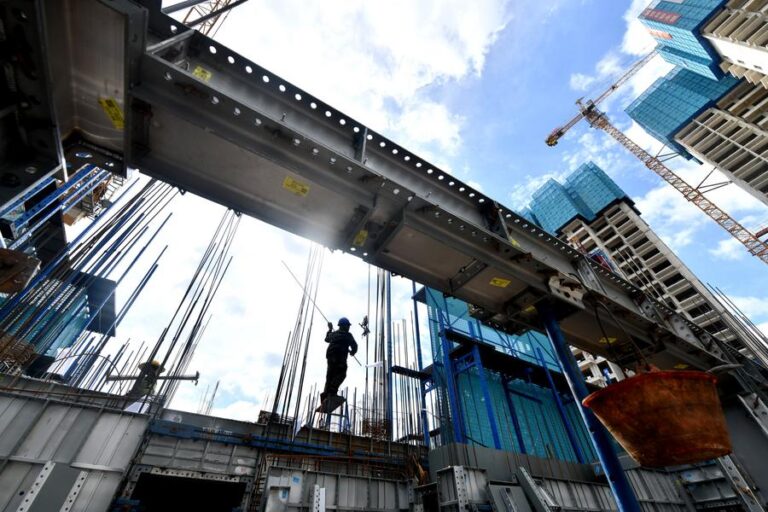BEIJING, Oct. 11 (Xinhua) — During the 14th Five-Year Plan period (2021-2025), China has made solid progress in meeting people’s housing demands, fostering a new development model for the real estate sector, and driving steady growth in the construction industry.
Since 2021, more than 11 million units of affordable and resettlement housing, including those for the redevelopment of “urban villages” and dilapidated residential areas, have been constructed across the country, benefiting over 30 million residents, according to a press conference on Saturday.
Dong Jianguo, vice minister of housing and urban-rural development, told the press conference that China has built a multi-tiered housing security system for various groups, such as new city dwellers and young people, in a bid to meet people’s basic housing needs.
According to Dong, local governments have adopted differentiated real estate policies, adjusting and optimizing measures in line with their own conditions. Over the past years, a string of measures have been rolled out to support home purchases, such as reducing down payment ratios and mortgage rates, and offering tax rebates for “sell-to-buy” home upgrades.
During the 2021-2025 period, the country recorded about 5 billion square meters of floor space in new commercial housing sales. Meanwhile, the existing home market has also grown rapidly, with 15 provincial regions now seeing more second-hand home transactions than new home sales.
To address risks from stalled real estate projects, China has launched a nationwide campaign to guarantee that pre-sold homes are handed over on time. So far, more than 7.5 million previously delayed units have been completed and delivered, effectively safeguarding homebuyers’ legitimate rights and interests, Dong said.
Beyond building new homes, China has made progress in urban renewal. Since 2021, more than 240,000 aging residential communities have been renovated, benefiting over 40 million households, or 110 million people.
The city upgrades included the installation of 129,000 elevators, the construction of over 3.4 million parking spaces, and the creation of 64,000 new community facilities, such as those for elderly care and childcare services. Meanwhile, 840,000 kilometers of underground pipelines for water, gas and heating have been renewed, along with the creation of over 18,000 pocket parks and 25,000 kilometers of urban greenways.
Over the past years, the government has strived to meet not only people’s basic housing needs but their growing aspirations for better living conditions, Minister of Housing and Urban-Rural Development Ni Hong said.
To ensure a stable and healthy property market, China has accelerated the development of a new model for the real estate sector, focusing on improving the housing supply system, reforming financing and sales mechanisms, and developing quality homes that are safe, comfortable, green and intelligent.
Dong noted that the ministry has guided local authorities to assess the housing demand based on demographic changes, plan land supply scientifically, and allocate financial resources efficiently to help balance supply and demand and foster a healthy market.
Under the effective policies and measures, China’s construction industry has achieved stable expansion.
In 2024, the sector’s total output reached 32.7 trillion yuan (4.6 trillion U.S. dollars), up 24 percent from 2020. Between 2021 and 2024, the country completed 15.4 billion square meters of new building area, 79,000 kilometers of municipal roads, 3,429 kilometers of urban rail transit, 16,000 kilometers of railway, and 290,000 kilometers of highways, according to Vice Minister of Housing and Urban-Rural Development Li Xiaolong.
Moreover, Chinese construction enterprises have made their mark on the international stage. From 2021 to 2024, they signed over 1 trillion U.S. dollars in overseas engineering contracts, generating 640 billion U.S. dollars in revenue. In 2025, 76 firms of the Chinese mainland were listed among the world’s top 250 international contractors, including four in the top ten, Li said. ■

